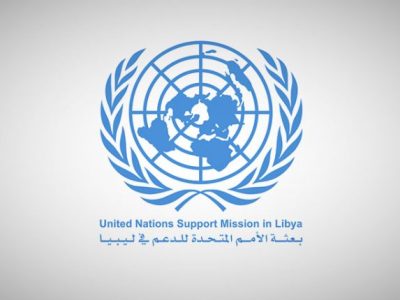Tackling Youth Unemployment in Libya for Economic Renewal
Libya’s demographics offer a unique opportunity and a daunting challenge. Nearly half of all citizens are under the age of 25, yet almost the same proportion of them cannot find work. The World Bank estimates that youth unemployment among 15- to 24-year-olds reached 49.5 percent in 2024, one of the highest rates in the region. This stark statistic reveals more than idle hands. It foreshadows a generation at risk of disillusionment, one that has little stake in the country’s recovery and limited hope for a productive future.
The Scale and Stakes of Youth Joblessness
A modern state cannot thrive when its youngest citizens are shut out of the economy. Libya’s official figures understate the problem because many unemployed young people do not appear in formal surveys. One UNICEF study found unemployment among those aged 15 to 34 at 38.4 percent in 2023, a figure that swells further when underemployment and discouragement are included. Youth joblessness steals potential output, drains household incomes and puts pressure on public finances through subsidies and social support. The International Organization for Migration warns that continued inaction could fuel new waves of irregular migration across the Mediterranean.
The social consequences are equally severe. Young people without jobs are more likely to drift into informal work or even crime. Town squares in Tripoli and Benghazi have witnessed protests in recent years, with young demonstrators calling for opportunities rather than handouts. Families endure mounting frustration when educated graduates queue for hours only to find no positions available. This frustration inevitably morphs into mistrust of institutions and creates fertile ground for unrest.
Barriers to Youth Employment
Libya’s public sector absorbs the lion’s share of formal employment. State-owned enterprises and government ministries remain the primary employers, partly because they offer job security and decent wages. Private businesses struggle to compete with this model, particularly when credit is scarce and operating costs are high. Entrepreneurs report that banks demand excessive collateral and charge high interest rates, deterring small firms from expanding their workforces.
Education and training systems have not kept pace with market needs. A 2024 UNDP initiative launched a new technical and vocational education and training department, aimed at creating green jobs in partnership with Libyan-Korean Centre and private firms. While this is a welcome development, programming remains limited in scope and reach. Remote areas in the south and west often lack training centres altogether, and transport costs to urban campuses can be prohibitive. As a result, many graduates emerge without the practical skills demanded by an evolving economy.
Early Successes and Promising Models
There are bright spots that point the way forward. The Foras platform, an IOM-backed job portal launched five months ago, allows young jobseekers to create profiles and connect with employers free of charge. Early data show that more than 10,000 Libya-based profiles have led to several thousand interviews. Pilot microfinance schemes in Misrata and Tripoli, supported by the European Union, have provided small loans to youth-led start-ups in agriculture, IT and crafts. Beneficiaries report that access to capital has encouraged them to hire local graduates rather than operate alone. These initiatives demonstrate that targeted support can unlock latent entrepreneurial energy.
A Policy Roadmap for Youth Employment
Sustained progress will require coordinated policy action across multiple fronts. First, Libya must reform its public-sector hiring practices. Shifting from open-ended recruitment to performance-based contracts would allow ministries to hire only for genuine needs, freeing up budget space for private-sector partnerships. Second, expanding vocational training must move beyond urban centres. Establishing mobile training units and accrediting community-based providers can bring practical courses to the underserved. Linking these programmes to market data from the Ministry of Economy would ensure that courses align with local demand.
Furthermore, the financial sector must become youth-friendly. Mobile banking and fintech platforms can lower the barrier to credit by using alternative data for credit scoring. Partnerships between banks and telecommunications companies could offer youth-oriented loan products with reduced collateral requirements. Fourth, job intermediation services need to scale up. The success of the Foras platform demonstrates that digital tools work. Government agencies might seek to integrate these services into public employment offices and enhance them with labour market information, counselling and follow-up support.
Long-Term Benefits and Economic Renewal
A meaningful reduction in youth unemployment would undoubtebly reverberate across the Libyan economy. Every job created for a young Libyan adds to household incomes, boosts consumption and strengthens the country. Reducing the reliance on subsidies and welfare spending frees public funds for infrastructure and social services. A vibrant private sector with active youth participation is also more resilient to oil price shocks and political turbulence.
Young entrepreneurs often pioneer innovation. In neighboring Tunisia the start-up sector, fueled by youth talent and small grants, has added measurable value to GDP. Libya has the same potential, provided that political leaders commit to reform and private-sector actors scale their apprenticeship and hiring programmes. As security improves, attracting foreign direct investment into youth-driven industries will further accelerate growth.
Libya’s demographic future can be its greatest asset or its deepest vulnerability. Addressing youth unemployment is not a matter for social policy alone. It is the foundation of national renewal. The window for action remains open, but only if leaders act decisively. By reforming education, finance and labour intermediation now, Libya can replace frustration with opportunity and build a more powerful economy.




